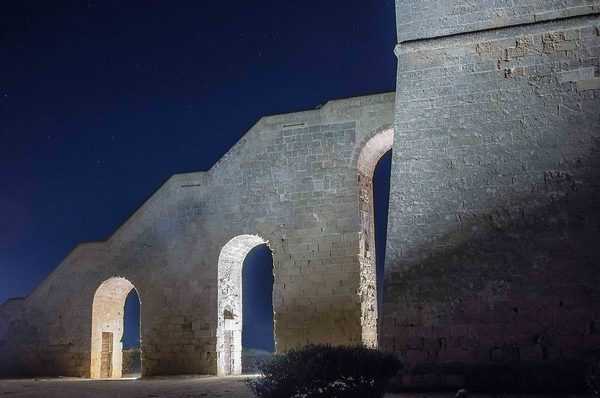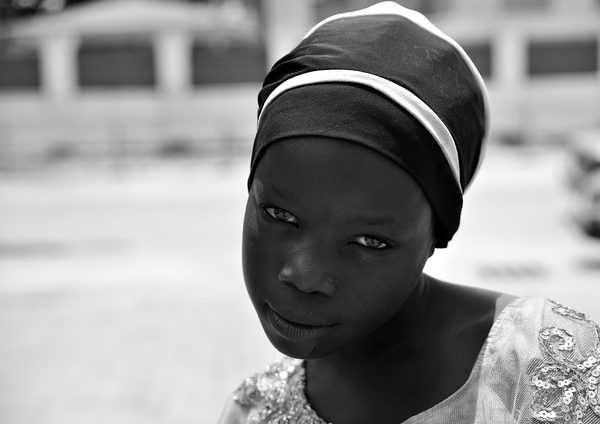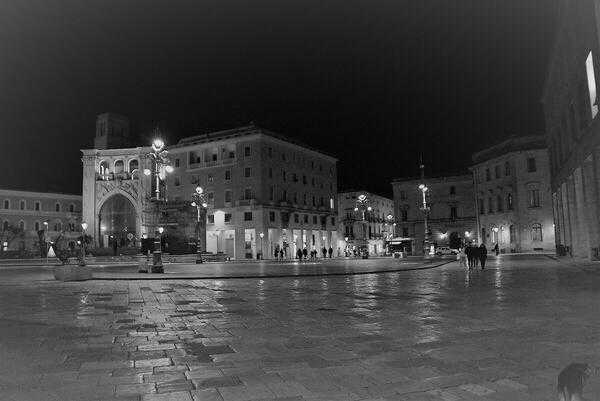Alternatives to the Sigma 28mm f/1.4 DG HSM Art Lens
While there are many prime and zoom lenses covering the 28mm focal length, only a small number of them have an f/1.4 aperture.
One lens that matches both focal length and maximum aperture is the Zeiss 28mm f/1.4 Otus Lens, a manual-focus-only lens that sets the bar for wide angle image quality and a lens that sends fear and trepidation into the competitors.
In the Sigma Art vs. Zeiss Otus image quality comparison at f/1.4, you are going to see the Sigma practically equaling the Zeiss performance.
At f/2, the difference is even harder to discern.
Looking at the specs and measurements, the Sigma 28mm f/1.4 Art Lens vs. Zeiss 28mm f/1.4 Otus Lens comparison shows the Sigma significantly lighter and smaller.
The Sigma uses much smaller filters (77mm vs. 95mm) and has a modestly higher maximum magnification (0.19x vs. 0.16x).
The Zeiss is built like a tank.
That the Zeiss Otus costs 3.5x as much as the Sigma Art lens makes the Sigma appear remarkable.
Nikon is the big camera manufacturer brand to feature a primary-spec-matching lens as of review time, the Nikon 28mm f/1.4E ED AF-S Lens.
While the Nikon awaits testing on an ultra-high-resolution camera, the current image quality comparison shows the
Sigma easily discernable as the sharper lens.
The Nikon has modestly less vignetting, more geometric distortion and harsher flare response.
Looking at the specs and measurements, the Sigma 28mm f/1.4 Art Lens vs. Nikon 28mm f/1.4E Lens comparison shows the Nikon lens being considerably smaller and lighter.
I expect the Nikon lens to autofocus consistently more accurately than the Sigma on a DSLR.
The Nikon is considerably more expensive.
If a modestly wider or longer focal length will work for your application, a plethora of lenses become available for comparison and I’ll pick two of this lens’ siblings.
I’ll go wider first with the Sigma 24mm f/1.4 DG HSM Art Lens.
In the image quality comparison at f/1.4, I like the 28mm results better.
By f/2, the 24mm lens’ center-of-the-frame results are catching up to the 28mm’s results, but the 28mm remains the slightly better option in the periphery.
By f/4, the two lenses are essentially equivalents.
The 24 has modestly less peripheral shading.
Looking at the specs and measurements, the Sigma 24mm vs. 28mm f/1.4 Art Lens comparison shows the 24 as the smaller, lighter lens.
Otherwise, these lenses are more similar than different in this comparison.
Not similar is the price – the 24 is significantly less expensive.
The next-wider Sigma full frame prime Art lens is the 35mm f/1.4 DG HSM Art Lens.
In the image quality comparison, we see that Sigma has very significantly improved upon the original Art prime lens.
The 35 has slightly less linear distortion.
Looking at the specs and measurements, the Sigma 28mm vs. 35mm f/1.4 Art Lens comparison shows the 35 the considerably smaller and lighter lens.
The 35 uses smaller filters (67mm vs. 77mm).
As with the last Art lens comparison, the specs show these lenses to be otherwise more similar than different.
The 35 is considerably less expensive.
Not so long ago, I would have said that 2-stops of aperture would have to be given up to get into a zoom lens covering the 28mm focal length, but the recently-prior-introduced Canon RF 28-70mm f/2L USM Lens
gives up only 1 stop and the Sigma 24-35mm f/2 DG HSM Art Lens also covers 28mm with an f/2 aperture.
Zoom lenses provide great versatility, but they are not completely advantaged over the primes.
Use the site’s comparison tools to make your evaluations.
Price and Value
Sigma Art lenses are seldom considered «cheap», but they nearly always have great-value-prices.
While the price of this lens is reaching into the mid-tier of lenses overall, its optical performance comparing to or exceeding that of lenses costing far more makes it seem like a bargain to me.
The Sigma 28mm f/1.4 DG HSM Art Lens is available in Canon, Nikon, Sony E and Sigma mounts.
This lens qualifies for Sigma’s Mount Conversion Service in case you later change your mind.
My standard disclaimer: There are potential issues with third party lenses.
With the exception of the Sony E mount, Sigma reverse engineers (vs. licenses) manufacturer electronics and algorithms and there is always the potential that a DSLR body might not support a (likely older) third party lens.
Usually, a lens can be made compatible by the manufacturer via a firmware update, but this cannot be guaranteed.
Compatibility with the Sigma USB Dock is risk-reducing as Sigma can make dock-compatible lens firmware updates available for easy download.
In regards to the Sony mount version of this lens, Sigma states «This product is developed, manufactured and sold based on the specifications of E-mount which was disclosed by Sony Corporation under the license agreement with Sony Corporation.»
Sigma provides a 1-year limited warranty and Sigma USA provides a limited 3-year warranty extension.
The reviewed Sigma 28mm f/1.4 DG HSM Art Lens in Canon mount was online-retail sourced.
Photos taken with Sigma 28-105mm f/2.8-4 Aspherical
|
RCE
RCE
|








 Next Page »
Next Page »
The sample photos are selected automatically between all photos posted by JuzaPhoto members, using the camera and the lens selected in the techs. If you find evident errors (e.g. photos taken with cameras and lenses that are not available yet), you can contribute to improve the page by sending a private message to the user that has entered incorrect values in the photo caption.
Reviews » Lenses » Lenses Sigma » Sigma 28-105mm f/2.8-4 Aspherical
Summary
After writing nearly a dozen Sigma prime Art lens reviews, it becomes increasingly difficult to write a creatively-different summary as these lenses share so many similarities.
All of these lenses are beautifully-designed, solidly built, and a pleasure to use.
They are not typically the smallest or lightest in their class and cost-cutting is not a high priority for the Art series.
Delivering a good value remains a priority and cutting-edge image quality obviously remains paramount.
The most notable differentiator among the Art series prime lenses is the focal length.
When 24mm is too wide and 35mm too long, the Sigma 28mm f/1.4 Art Lens is the right answer.
With its superior image quality, the 28mm option will often be the best choice over the other two and over the competitor brands as well.
This focal length avails general purpose use and the ultra-wide f/1.4 aperture, unsurpassed by any 28mm DSLR or MILC lens currently produced, extends that use to seemingly any light conditions while providing the strongest 28mm background blur possible.
This lens’ biggest downside, as I experienced, is DSLR AF accuracy inconsistency (sensor-based AF systems should completely side-step this problem). A firmware update from Sigma could dramatically reduce this issue making this lens a nearly-perfect 28mm option.
If 28mm works for your application, the Sigma 28mm f/1.4 DG HSM Art Lens deserves a position at the top of your shortlist.
Bringing you this site is my full-time job (typically 60-80 hours per week). Thus, I depend solely on the commissions received from you using the links on this site to make any purchase. I am grateful for your support! — Bryan
My Recommended Sigma 28mm f/1.4 DG HSM Art Lens Retailers
Rent the Sigma 28mm f/1.4 DG HSM Art Lens
The Tip Jar
Sigma 28mm f/1.4 DG HSM Art Lens
- MTF
- Specifications
- Press Release
by Bryan Carnathan
Manufacturer ID:441954Review Date: 2019-03-20
Navigate the Reviews« Sigma 24mm f/1.4 DG HSM Art Lens Review» Sigma 30mm f/1.4 DC HSM Art Lens Review
Canon & Sony News, Deals, Blog
- Bull Elk Hiding in a Pine Tree, Rocky Mountain National Park
… More Canon & Sony News
Sigma Global Vision and the USB Dock
Sigma’s Global Vision lenses get a classification of «A», «C» or «S», representing a primary Sigma-intended use of «Artistic», «Contemporary» and «Sports».
A full description of these categories can be found in the Sigma 35mm f/1.4 Art Lens press release.
Sigma has been introducing some very nice lenses in the Global Vision series, but I’m not a fan of the narrow categorization structure.
This of course is an «Art» lens and as such, gets an «A» stamped in a classy chrome circle on the lens barrel.
Don’t limit the lens’ use to its letter designation (unless you consider all photography to be «art»).
1 |
2 |
3 |
4
The focus calibration values were set for illustration purposes only.
Focal Length
What are the uses for a 28mm lens?
That is an important question that you should be asking.
With a prime lens, you get one focal length and your lens selection should begin with the focal length.
Having the angle of view that best suits the requirements of the subject is of paramount importance.
As with the 40mm f/1.4 Art lens, the image quality this lens delivers will cause you to attempt to make its focal length work for even fringe purposes.
Fortunately, again like the 40mm option, this focal length has great general-purpose utility.
While 28mm seems very similar to 24mm and 35mm, there is a noticeable difference between these focal lengths and some photographers need the 28mm option, either in lieu of or in addition to one or both of the alternatives.
The angle of view difference between 24mm, 28mm, and 35mm is illustrated below.
24mm |
28mm |
35mm
Obviously, 28mm frames modestly tighter than 24mm and a bit wider than 35mm.
Though obviously different, the middle option mostly combines the uses of the other two and many times a 28mm lens is ideal for general-purpose use.
Photojournalism is a great use of the 28mm focal length.
Portrait and wedding photographers will love the 28mm focal length for full body and small group portraits.
Any focal length can be great for landscape photography, but the 28mm option is a frequently used one.
Sports photographers able to get close to their subjects (such as basketball shot from over or under the net) or wanting to capture a wider/environmental view of their events will appreciate this focal length.
A 28mm lens is great for capturing indoor events.
Want a walk-around lens?
I’ve enjoyed carrying this lens around on the street, simply looking for subjects that catch my eye.
The 28mm focal length paired with a wide aperture is especially appealing for creative photography and also night sky photography.
As usual, I’ve only scratched the surface of the list of uses here.
APS-C sensor format cameras utilize a smaller portion of the image circle and that means a scene is framed more tightly, with 1.5x or 1.6x being the angle of view multiplier for Canon, Nikon and Sony’s lineup.
A 28mm lens behind one of these cameras results in a 42mm or 44.8mm full frame angle of view equivalent.
The uses for these angles of view do not vary greatly from the native 28mm full frame angle of view, but more working space is required for the same subject framing.
The narrower angle of view encourages a more-pleasing portrait perspective and/or tighter portrait framing.
Build Quality & Features
With a strong resemblance showing throughout the line, Sigma’s Global Vision series Art lenses all have a classy modern styling, visually featuring various reflectivity levels of black finish and the build quality seems great.
MFD |
∞
w/ Hood: MFD |
∞
Rotated
Compare »
The 28 Art’s exterior features quality Thermally Stable Composite material construction with metal used for the glossy black mount end and of course utilized liberally internally.
The barrel diameter changes only slightly throughout the length of the lens aside from at the mount end where diameter growth always occurs.
The focus ring feels great and a 180° section of the barrel is mold-ribbed to facilitate grip.
The AF/MF switch, like the rest of the Art lenses, has a white background indicator when in the AF position.
The switch is easy to find on its raised switch bank and it is firm with a strong click into position.
This lens has some weather sealing, including a rear gasket seal as seen below.
Wide aperture lenses require wide diameter lens elements and, as seen in the design illustration shared earlier in the review, this lens has a lot of densely-arranged elements.
Those add up to a noticeable weight for this lens’ modest size.
Overall, this lens is large and heavy for its class, but it has a very comfortable size to use and I haven’t minded the weight.
Let’s compare:
| Model | Weight | Dimensions w/o Hood «(mm) | Filter | Year | ||
| Canon EF 28mm f/1.8 USM Lens | 10.9 | (310) | 2.9 x 2.2 | (74.0 x 56.0) | 58 | 1995 |
| Canon EF 28mm f/2.8 IS USM Lens | 9.2 | (260) | 2.7 x 2.0 | (68.4 x 51.5) | 58 | 2012 |
| Canon EF 35mm f/1.4L II USM Lens | 26.8 | (760) | 3.2 x 4.2 | (80.4 x 105.5) | 72 | 2015 |
| Nikon 28mm f/1.4E ED AF-S Lens | 22.8 | (645) | 3.3 x 4.0 | (83.0 x 100.5) | 77 | 2017 |
| Nikon 28mm f/1.8G AF-S Lens | 11.6 | (330) | 2.9 x 3.2 | (73.0 x 80.5) | 67 | 2012 |
| Nikon 35mm f/1.4G AF-S Lens | 21.2 | (600) | 3.3 x 3.5 | (83.0 x 89.5) | 67 | 2010 |
| Sigma 28mm f/1.4 DG HSM Art Lens | 30.5 | (865) | 3.3 x 4.2 | (82.8 x 107.7) | 77 | 2018 |
| Sony FE 28mm f/2 Lens | 7.1 | (200) | 2.5 x 2.4 | (64.0 x 59.9) | 49 | 2015 |
| Sony FE 35mm f/1.4 ZA Lens | 22.2 | (630) | 3.1 x 4.4 | (78.5 x 112.0) | 72 | 2015 |
| Tamron 35mm f/1.8 Di VC USD Lens | 16.9 | (479) | 3.2 x 3.2 | (80.4 x 81.3) | 67 | 2015 |
| Zeiss 28mm f/1.4 Otus Lens | 49.1 | (1390) | 4.3 x 5.4 | (108.9 x 137.0) | 95 | 2015 |
Here is a comparison table of, at review time, all Sigma full frame prime Art lenses.
| Model | Weight | Dimensions w/o Hood «(mm) | Filter | Year | ||
| Sigma 14mm f/1.8 DG HSM Art Lens | 41.3 | (1170) | 3.8 x 5.0 | (95.4 x 126) | 2017 | |
| Sigma 20mm f/1.4 DG HSM Art Lens | 33.5 | (950) | 3.6 x 5.1 | (90.7 x 129.8) | 2015 | |
| Sigma 24mm f/1.4 DG HSM Art Lens | 23.5 | (665) | 3.3 x 3.6 | (85.0 x 90.2) | 77 | 2015 |
| Sigma 28mm f/1.4 DG HSM Art Lens | 30.5 | (865) | 3.3 x 4.2 | (82.8 x 107.7) | 77 | 2018 |
| Sigma 35mm f/1.4 DG HSM Art Lens | 23.5 | (665) | 3.0 x 3.7 | (77.0 x 94.0) | 67 | 2012 |
| Sigma 40mm f/1.4 DG HSM Art Lens | 42.4 | (1200) | 3.5 x 5.2 | (87.8 x 131.0) | 82 | 2018 |
| Sigma 50mm f/1.4 DG HSM Art Lens | 28.8 | (815) | 3.4 x 3.9 | (85.4 x 99.9) | 77 | 2014 |
| Sigma 70mm f/2.8 DG Macro Art Lens | 18.2 | (515) | 2.8 x 4.2 | (70.8 x 105.8) | 49 | 2018 |
| Sigma 85mm f/1.4 DG HSM Art Lens | 39.9 | (1130) | 3.7 x 5.0 | (94.7 x 126.2) | 86 | 2016 |
| Sigma 105mm f/1.4 DG HSM Art Lens | 57.9 | (1640) | 4.6 x 5.2 | (115.9 x 131.5) | 105 | 2018 |
| Sigma 135mm f/1.8 DG HSM Art Lens | 39.9 | (1130) | 3.6 x 4.5 | (91.4 x 114.9) | 82 | 2017 |
For many more comparisons, review the complete Sigma 28mm f/1.4 DG HSM Art Lens Specifications using the site’s Lens Spec tool.
A comparison photo can greatly help put the sizes into perspective.
Positioned above from left to right are the following lenses:
Sigma 24mm f/1.4 DG HSM Art LensSigma 28mm f/1.4 DG HSM Art LensSigma 35mm f/1.4 DG HSM Art LensSigma 40mm f/1.4 DG HSM Art LensSigma 50mm f/1.4 DG HSM Art Lens
The same lenses are shown below with their hoods in place.
Use the site’s product image comparison tool to visually compare the Sigma 28mm f/1.4 DG HSM Art Lens to other lenses (link is preloaded with a comparison).
Like the rest of the Sigma Art lenses, the 28 Art lens arrives with a lens hood, the Sigma LH828-01, included in the box.
This hood is large in size, affording a nice amount of protection to the lens from both impact and flare-inducing light.
Constructed of strong molded plastic, this hood has a slight amount of flex (good for absorbing impact) and the interior is ribbed to avoid reflections.
The push-button release allows for easy installation and removal.
Sigma Art lenses come in a nicely padded, double-zippered nylon case.
A shoulder strap is provided, but a belt loop is not.
Sigma’s lens caps are very nice.
Max Aperture
When you buy a prime lens instead of a zoom, you expect at least one strong advantage to offset the loss of zoom range versatility.
Common advantages include smaller size, lighter weight, lower price, better image quality, and/or a wider aperture.
This prime lens does not check the first three boxes, but it definitely covers the last two.
I’ll discuss image quality in the next section, but with only a few exceptions, the f/1.4 max aperture made available by this lens is as wide as DSLR and MILC (Mirrorless Interchangeable Lens Camera) lenses get and no autofocus lens wider than 50mm exceeds the 28 Art’s maximum aperture.
The wider the aperture, the more light is able to reach the imaging sensor.
Allowing more light to reach the sensor permits freezing action, handholding the camera in lower light levels and/or use of a lower (less noisy) ISO setting.
It seems that there is always enough light for this lens to capture a sharp image.
Increasing the aperture opening also permits a stronger, better subject-isolating background blur (at equivalent focal lengths).
The shallow f/1.4 depth of field must of course be acceptable to you in these circumstances, but shallow depth of field is a highly-desired lens capability, excellent for making the subject pop from a blurred background.
Longer focal length lenses are better at creating a strong background blur, but this one can get the job done if the subject is close enough as illustrated in the maximum blur example below.
Those looking for a prime lens often already have a general-purpose zoom lens in their kits and 28mm is typically covered by that lens.
Compare the background blur of your lens at its maximum-available aperture at 28mm.
f/1.4 |
f/2.0 |
f/2.8 |
f/4.0 |
f/5.6 |
f/8.0
Especially if your lens opens to only f/4 or similar at 28mm, the difference between it and f/1.4 is quite noticeable.
An f/1.4 aperture enables the higher precision AF capabilities (most often the center AF point) in all cameras supporting this feature and f/1.4 presents a bright DSLR viewfinder image.
This wide aperture is especially valuable after the sun sets, in the shade and when shooting indoors, including indoors using only ambient window light.
Note that, especially under full sun conditions, even a 1/8000 shutter speed will often be not fast enough to avoid blown highlights in f/1.4 images (use a neutral density filter to avoid this problem).


































































